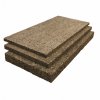Hello - I've been off and on planning a final enclosure for my Russian, Herb. I've had some run ins with people on here before, so I'd really appreciate only help, no harm (unless the harm is for the safety of the tort)
As everyone here knows, tortoises can eventually scratch thru wood sealant, and I'm running into this issue now. I water resisted (not proofed because you cant waterproof in this situation) the walls and bottom for humidity, but my real question is this. Could I use aquarium (well I guess animal safe) expanding foam for the walls and ceiling to give a textured backplate, and to protect the wood from water vapor? Also, could I put a sheet of heavy duty plastic on the bottom first, and have the foam stick to that and the wall to secure it? I'm trying for a more naturalistic vivarium look for this one, the last two have been slowly getting better and better as time goes on. Improve, improve, improve, amirite?
Anyways I'm thinking, for the foam to make it like bumpy and rough to give a textured wall look, then the standard aquarium procedure to make it safe for me tort. (Coating it with 100% non toxic aquarium safe silicone, and adding coco coir to that mess to give color and all)
That is, if my idea will even work. Anyone have any experience with this? My current enclosure is 4x2x2 (x2), pictures should be on my profile. I'm planning on going 6x2x2 (x3) for this one to give him more room, and heck, I have the space so why not? And yes, he does use each floor if y'all wonder. He uses both all the time. Tbh, not sure why more people DON'T do this lol. Anyways, thanks for reading. Let me know if expanding foam would work. I know it isn't normally used with wood, but thought I'd run it by yall before I did anything.
As everyone here knows, tortoises can eventually scratch thru wood sealant, and I'm running into this issue now. I water resisted (not proofed because you cant waterproof in this situation) the walls and bottom for humidity, but my real question is this. Could I use aquarium (well I guess animal safe) expanding foam for the walls and ceiling to give a textured backplate, and to protect the wood from water vapor? Also, could I put a sheet of heavy duty plastic on the bottom first, and have the foam stick to that and the wall to secure it? I'm trying for a more naturalistic vivarium look for this one, the last two have been slowly getting better and better as time goes on. Improve, improve, improve, amirite?
Anyways I'm thinking, for the foam to make it like bumpy and rough to give a textured wall look, then the standard aquarium procedure to make it safe for me tort. (Coating it with 100% non toxic aquarium safe silicone, and adding coco coir to that mess to give color and all)
That is, if my idea will even work. Anyone have any experience with this? My current enclosure is 4x2x2 (x2), pictures should be on my profile. I'm planning on going 6x2x2 (x3) for this one to give him more room, and heck, I have the space so why not? And yes, he does use each floor if y'all wonder. He uses both all the time. Tbh, not sure why more people DON'T do this lol. Anyways, thanks for reading. Let me know if expanding foam would work. I know it isn't normally used with wood, but thought I'd run it by yall before I did anything.
